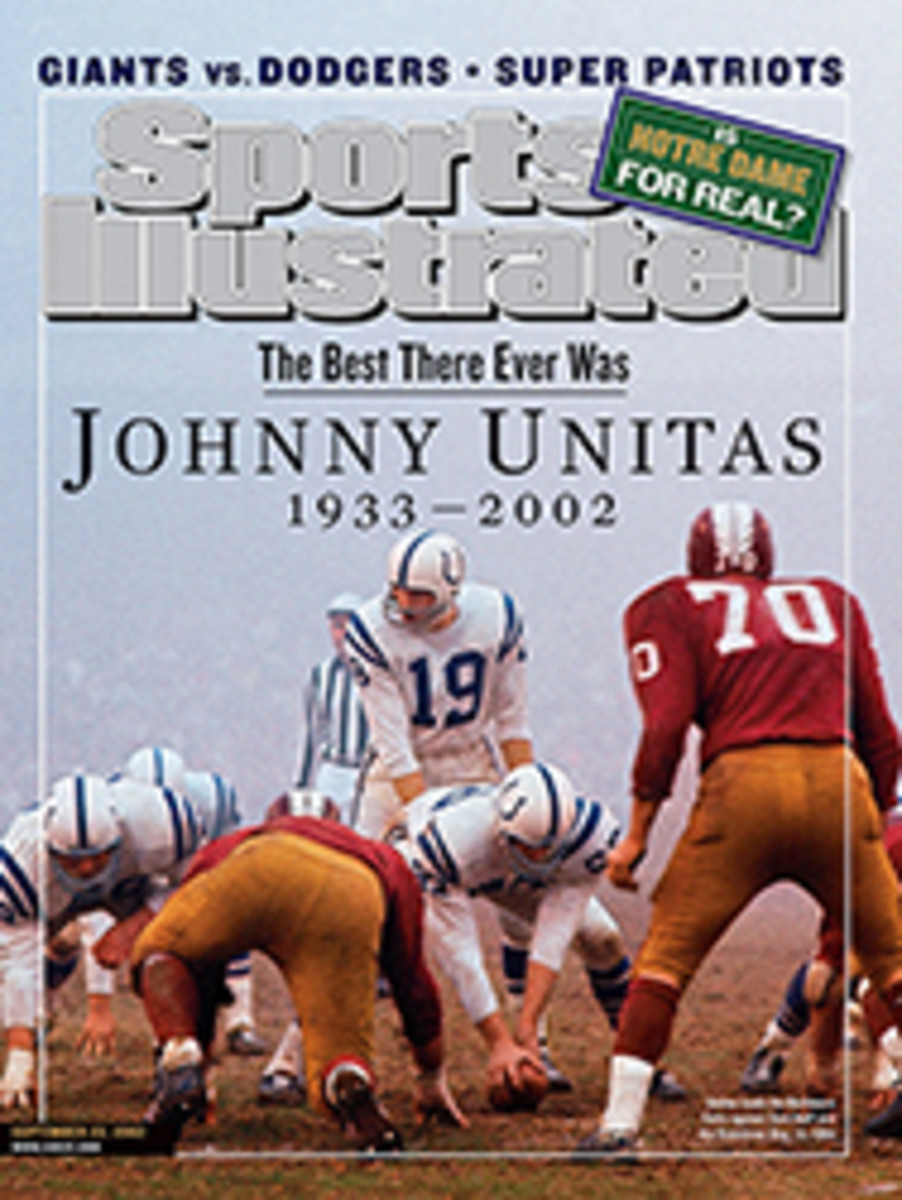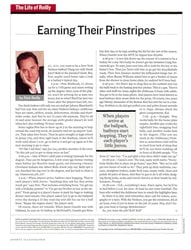
Getting to Know U
They looked like still-life portraits of saints in stained
glass--those Technicolor photographs, scissored from Sport
magazine, that papered boys' bedrooms in the 1950s. "When we
started, the media was a magnifying glass," says Steve Sabol,
president of NFL Films, which he founded with his father, Ed, in
the early 1960s. "It amplified athletes. So as a kid you woke up
with those Hy Peskin and Ozzie Sweet color photos pinned to the
wall." Peskin and Sweet were photographers, yes, but also
hagiographers, chronicling the lives of supermen.
By the '70s, of course, the media had morphed from stargazing
telescope to high-powered microscope, and athletes were enduring
extreme close-ups, 60 Minutes-style, of their every blemish and
beauty mark. "And now," sighs Sabol, who will soon turn 60,
"we've gone from telescope to microscope to proctoscope--we're
right up your a--. No man is a hero to his valet, and television
has become a valet, following a guy to his car, to his house, to
the nightclub." Thus the Dallas Cowboys' dirty laundry was
literally aired, for several weeks this summer, on HBO's Hard
Knocks. And no episode of MTV's Cribs is complete until some
gold-grilled rapper, ermine throw pillow in one hand, falls on
his bed and says, "This is where the magic happens."
"If we'd had all that stuff when I was playing," Paul Hornung
said to Sabol the other day, "I'd have been outta the league in
six months."
Mercifully what Hornung and Lombardi and Butkus had was NFL
Films, the Hubble telescope of magnifiers, which rendered players
larger than life, sure, but also larger than death. And so Johnny
Unitas didn't really die last week but will remain forever
preserved in a way that Ted Williams, for all his cryogenic
yearning, cannot possibly be. Unitas, you see, was a movie star,
and his best work, like Bogart's, is visible to this day. "It's
too bad I'm not old enough to remember you playing," a
thirtysomething man with a ZZ Top beard said to Unitas a couple
of years ago, by way of asking for his autograph. To which Unitas
replied, as if baffled by the statement, "That's why they got old
film."
Every NFL Film of Unitas begins the same way, with a signature
slow-motion establishing shot. "We'd use a telephoto lens on the
Colts breaking the huddle," says Sabol, "and the shot would just
be of his shoes, the black hightops approaching the line of
scrimmage at Memorial Stadium, which never had any grass after
the first two games of the season. It looked like a sandlot. And
there wasn't a football fan in America who didn't know, from just
that shot of the shoes, who it was and where it was."
The man who always shot the shoes was Morris Kellman. When Unitas
pioneered the pump fake, it wasn't just cornerbacks who bit but
cameramen, too. Except, that is, for Kellman, who has long since
passed from this world. "Morris Kellman," says Sabol, "never went
for the pump fake." As epitaphs go, a guy could do worse.
Kellman became the Capra of the Colts, the man who shot Johnny
Unitas--who was, in turn, the man who shot Liberty Valance. Or
more accurately: "He really was Gary Cooper in High Noon," says
Sabol of the silent, bristle-brushed, coal-country square. Unitas
was square in the best sense, of square meals and square deals
and square jaws. When, in his final full season, in San Diego, he
walked into a roomful of Chargers teammates passing a joint among
themselves, the 40-year-old Unitas said, "You only got one
cigarette for the bunch of you?"
"I looked at the game in dramaturgical terms," says Sabol,
an art major and running back at Colorado College. "With Unitas
the story was always the struggle: He was hurt, or leading the
team in a final drive, or in a snowstorm, or it was raining. It
seems like a cliche now, but in the '60s we looked at the mythic
component of games, of athletes as warriors. With players like
Unitas and teams like the Packers, we never mentioned statistics.
They don't last." What lasts are images of Unitas, forever
leaning--like a mime--into the wind.
So, 40 years later, those first NFL Films endure. "Because there
were no domed stadiums," says Sabol, who speaks in the
distinctive style of his films, "you could see the dust of
Memorial Stadium, the frozen tundra of Lambeau, the vivid colors
of Kezar Stadium. Cleveland Stadium was always wet--always. And we
conveyed the passing of time. The games all started at one
o'clock and ended in twilight, when Unitas was Rambo, coming down
the field in the dust." Set to martial music and narrated by John
Facenda, the Voice of God, these films still stir kids to try, in
the backyard, to throw slow-motion spirals that hang in the air
for an eternity before floating, like a feather from a nest, into
the hands of a receiver.
Johnny Unitas is alive, and he will play the Packers for as long
as film stock shall survive. "There's a proverb my dad liked,"
says Sabol. "'Tell me a fact and I'll learn. Tell me the truth
and I'll believe. But tell me a story and it will live in my
heart forever.'"
COLOR PHOTO: PETER GREGOIRE
Thanks to NFL Films, Unitas was a movie star, and his best work
is visible to this day.

